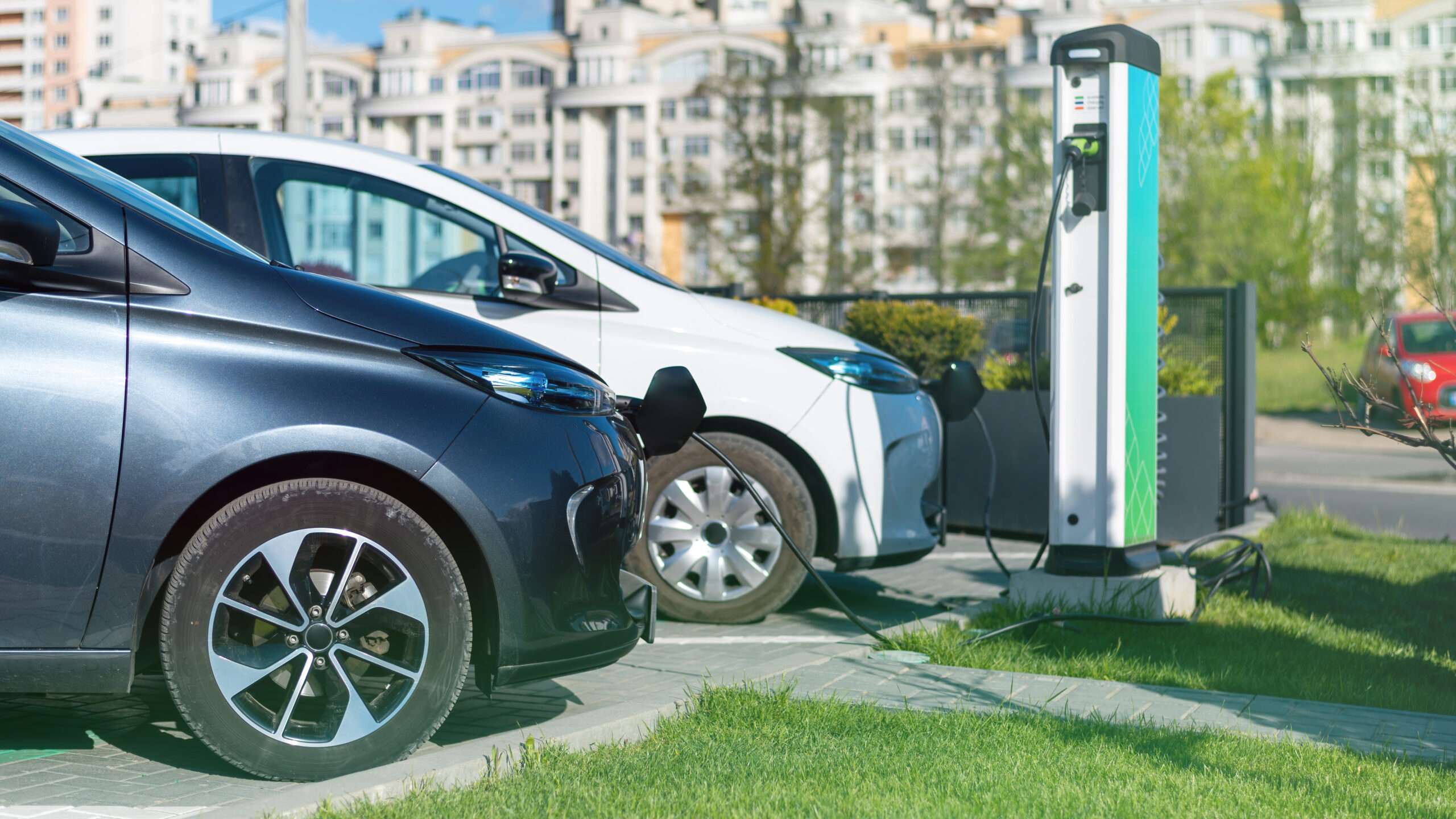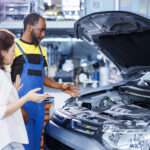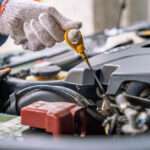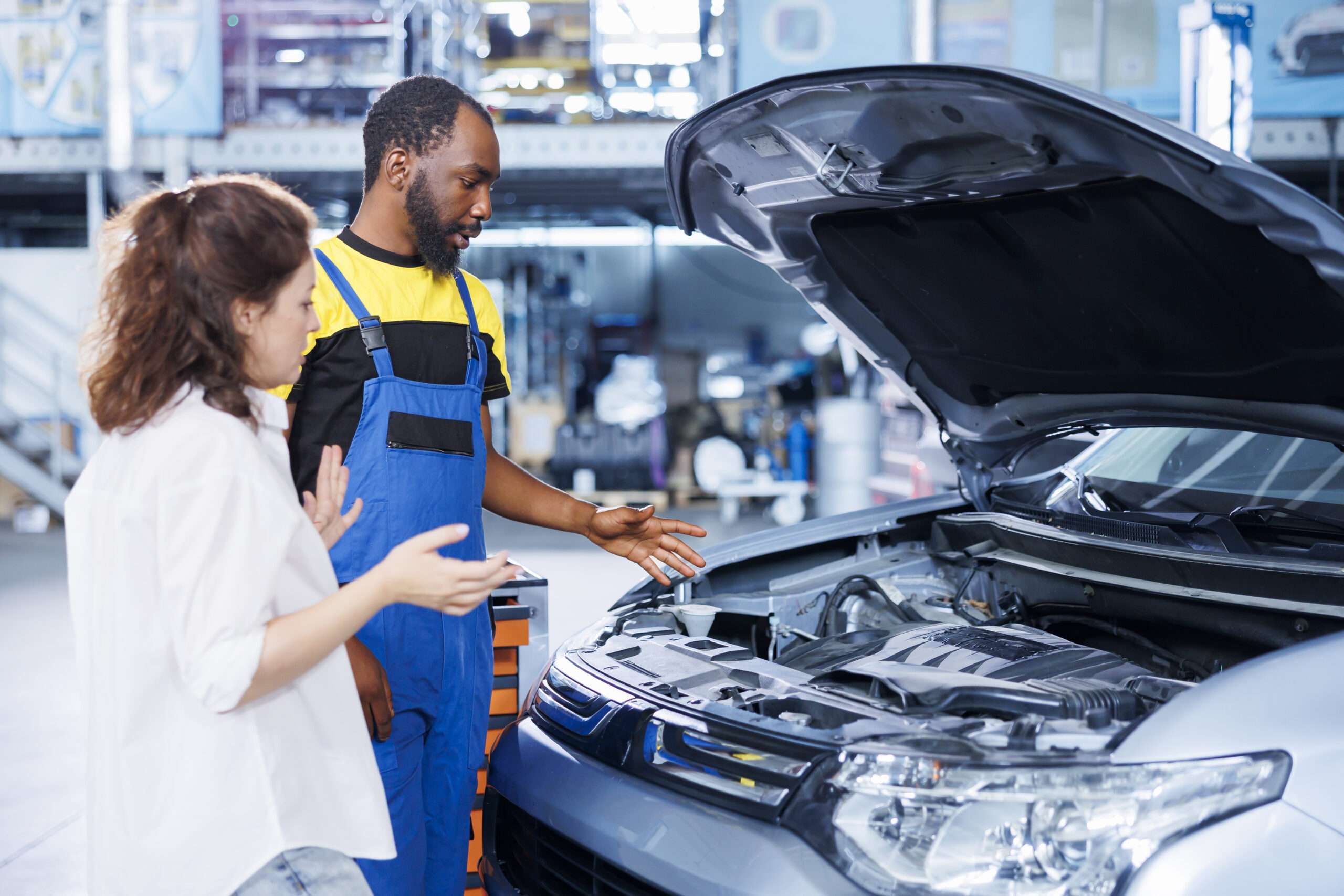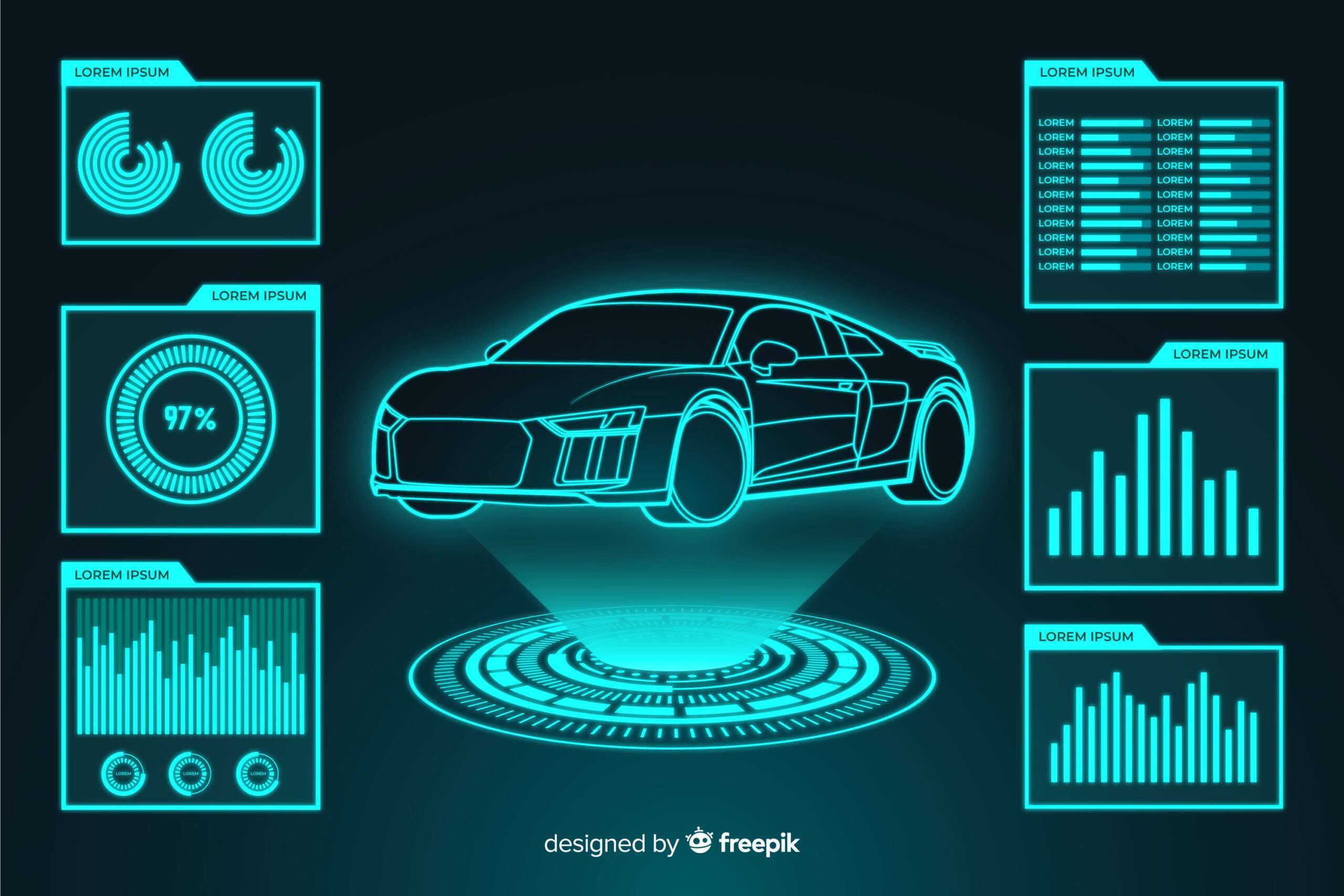Spend a moment listening. Could you hear that? That is the sound of quiet. It is the soft hum substituting for the V8’s thunderous roar. It sounds like a century-old paradigm shifting underfoot. The noisy, pounding heart of personal transportation that defined the 20th century—the internal combustion engine (ICE)—is nearing end. We are living through a whole reinventions of the very idea of mobility, not only seeing changes in the fuels running our cars.
The formula was straightforward for more than a hundred years: buy a car, run it yourself, fill it with gasoline, and keep its thousands of moving parts intact. That whole equation is being methodically disassembled and rebuilt into something fresh, clever, and far more sustainable. The future of the automotive sector is about a totally new species of movement, not about faster horses.
Unquestionably urgent climate change, amazing technological advancements, and a basic change in what we, as consumers, expect from our vehicles and our lives are driving this transformation. Here at the junction of electrification, autonomy, connectivity, and shared mobility is where we stand. Every one of these trends is a revolution in and of itself; taken as a whole, they will create a tidal wave of transformation that will affect every element of our life.
This book is your road map to grasp this new automotive environment. Most importantly, we will delve deeply, comprehensively into the heart of this revolution: the amazing electric car advantages making this future not only possible but also absolutely desirable. We will negotiate the forces rendering the old ways obsolete, explore the technologies building the future, and Fasten your seatbelt. The trip starts right now; the destination is fascinating.
Why the reign of the internal combustion engine is over?
In its day, the internal combustion engine was a wonder. It built suburbs, contracted the globe, and came to represent liberty and personal expression. Like all technologies, though, it exists in a context; that context has changed irreversibly. Now threatening the health of our planet and our cities is the very invention that gave us hitherto unheard-of mobility.
Pressures from all directions are building. Faced with the clear facts of climate change, governments all around are enacting ever stricter emissions rules. The “imperative of a more sustainable future is pushing governments and manufacturers to focus on alternative non-polluting fuels,” notes Kestria, a worldwide executive search firm. This is a strong shove towards a post-fossil-fuel world, not a mild prod. Not anomalies; rather, the writing on the wall is the ambitious “Fit for 55” package from the European Union and California’s proposal to forbid the sale of new gasoline-powered cars by 2035.
Concurrent with this change is consumer consciousness. Once a minor consideration for environmental impact, buying decisions now revolve on this major factor. People know more than ever of the greenhouse gases warming our planet and the smog choking our cities. Main offender is the transportation industry. Wikipedia’s thorough page on sustainable transportation notes that the sector is a major contributor to local air pollution and global CO2 emissions, which the UN Environment Program projects causes millions of yearly premature deaths.
This is causing a significant behavioral change away from the conventional wisdom regarding car ownership. “Mobility as a service” (MaaS), whereby owning a car is seen less as a need and more as an expensive hassle, is emerging in many dense metropolitan centers. A new menu of transportation choices is being created by ride-hailing’s convenience, integrated public transportation’s efficiency, and micromobility’s health benefits—like those of e-bikes and scooters. Every mobility question’s default response is no longer the car.
Read our thorough study on the History of the Internal Combustion Engine and Its Environmental Impact to grasp the whole narrative of the technologies we are leaving behind.
Deciphering the Many Benefits of the Electrifying Heart of the Revolution
The electric vehicle (EV) is absolutely central to this automotive rebirth. Originally dismissed as glorified golf carts, EVs have developed into high-performance, technologically advanced machines far better than their ICE counterparts in practically every relevant sense. The discussion now centers on how fast EVs will take over the market rather than whether they are a reasonable substitute. A long and convincing list of electric car benefits is driving this predominance.
First advantage: environmental and health imperatives
This is the most often mentioned advantage for good cause. Changing to electric cars has enormous positive effects.
Eliminating tailpipe emissions first and most importantly. At the point of use, an EV running on battery power generates absolutely zero—zero—pollutants. For metropolitan air quality, this is revolutionary. Imagine a city center free of the haze of nitrogen oxides (NOx) and particulate matter (PM2.5), contaminants directly linked to asthma, respiratory diseases, and other severe health problems. Considering the United States, The Department of Energy notes that this lessens strain on healthcare systems and improves public health.
What about the emissions produced during the generation of the electricity? This is a fair, often asked question. Still, the data is unambiguous: EVs are cleaner even on a grid still running fossil fuels. Leading UK charging company Pod Point’s research shows that an electric motor’s higher efficiency means that even when charged with electricity from a natural gas power plant, an EV’s total carbon footprint is less than a comparable gasoline car. Moreover, each year our energy systems are getting cleaner. Every EV on the road loses lifetime carbon footprint as more solar, wind, and hydropower come online.
Beyond air pollution, noise is a concern. EVs are shockingly quiet, which helps to create a more peaceful and less stressful metropolitan setting. Long-term traffic noise exposure has been linked to health problems ranging from anxiety to hearing loss and sleep disruptions. The general acceptance of electric vehicles promises to transform the continual noise of our cities into a far more pleasant hum.
Practical Tip: “Check your local utility provider’s website. Many now offer ‘green’ or “renewable” energy plans that let you source your home’s electricity, including what you use to charge your car, from 100% renewable sources. This makes your EV really zero-emission from well to wheel.”
Advantage #2: Thrill of Performance & Superior Driving Experience
Let me debunk a myth right now: electric cars are not dull. Actually, they provide a driving experience most gasoline cars, except high-end supercars just cannot match. The physics of an electric motor holds the secret.
An electric motor provides 100% of its accessible torque right away unlike an internal combustion engine, which must rev up to produce power. Pressing the accelerator results in a smooth, silent, usually startling surge of acceleration. There is just pure, continuous thrust—no gear changes or hesitation. Whether you’re merging onto a highway or zipping across city traffic, this makes EVs remarkably responsive and exciting to drive.
Moreover, the basic architecture of an electric vehicle helps to provide better ride. Usually found under the car’s floor, the large battery pack is flat sheet. This results in an extremely low center of gravity for the car, which as DriveClean California points out offers better weight distribution and stability. The car that results feels planted and safe, with little body roll when cornering.
With the silent, vibration-free operation of the electric motor, mix this quick performance and confident handling with to get a driving experience that is not only more exciting but also notably more refined and peaceful than its gasoline-powered equivalent.
Practical Tip: “Don’t just take our word for it. Book one; find a safe, open road and experience the acceleration from a complete stop. It’s a visceral feeling that statistics and articles cannot fully convey.” The next time you’re near a dealership that offers EV test drives. Don’t just drive it around the block.
Third advantage: the financial case—saving your wallet
Although the initial purchase cost of an electric vehicle (EV) can still be more than that of a comparable ICE car (a difference that is fast closing), over time the savings are rather significant. When one considers the whole cost of ownership, the financial benefits of electric cars become rather obvious.
Fuel is the most obviously saveable. By per-mile, electricity is far less expensive than gasoline. Paying $0.10 per kilowatt-hour is like driving on gasoline that runs less than $1 per gallon, according to the City of Moreno Valley in California. Although your local rates will vary, the savings are always rather noteworthy. This can translate for the typical driver into hundreds, or perhaps thousands, of dollars in fuel savings annually.
Then there is upkeep, or more importantly, lack of it. Compared to the thousands in an internal combustion engine and the related transmission, an electric motor boasts just a few moving components. Therefore:
- Not one change in oil.
- Not even ignition coils or spark plugs.
- Not one fuel filter or pump.
- Not one exhaust system or catalytic converter.
- Not a timing belt.
This covers a good amount of the regular maintenance expenses connected with car ownership. EVs also use a function known as regenerative braking, in which the electric motor slows the vehicle down by turning kinetic energy back into battery charge. By greatly extending their life, this greatly lowers the wear and tear on the conventional brake pads and rotors.
Government incentives can lastingly sweeten the bargain even further. To promote electric vehicle adoption, many nations, states, even local governments grant tax credits, rebates, and other benefits. These can significantly cut the effective purchase price of a new electric vehicle.
“Search online for a ‘EV savings calculator,'” Practical Tip says. “These tools allow you to input your daily commute distance, local gasoline and electricity prices, and the specific models you’re considering. It will give you a personalized estimate of your potential annual and long-term savings. The numbers are often startling.”
Navigating the incentive terrain can be challenging. All the savings in your area can be found with our updated 2025 Comprehensive Guide to EV Tax Credits and Rebates.
Advantage #4: Technical Integration & Convenience
Owning an electric vehicle redefines the idea of “refueling.” The great majority of EV charging occurs at home, overnight, instead of weekly visits to a gas station. You get home, plug your car in exactly as you would your smartphone, and wake up every morning to a “full tank.” This is a degree of convenience gasoline vehicles cannot provide.
Although range anxiety was a real worry in early days of electric vehicles, it is rapidly disappearing. On a single charge, modern EVs routinely run 250–400 miles, more than enough for several days of average driving. The public DC fast-charging network is explosively expanding for longer trips. Over the roughly 20 to 30 minutes it takes to stop for coffee and a bathroom break, a modern EV can add 100 to 200 miles of range.
EVs lead the “software-defined vehicle” (SDV) trend even beyond charging. According to a PTC trend report, an SDV is a vehicle whose features and functionality are more under control via software than via hardware. This lets manufacturers send over-the-air (OTA) updates that would enhance your car long after you bought it. These updates can unlock fresh features, boost efficiency and range, or improve the user interface—all of which will help your car to get better over time rather than worse. This is a basic break from the fixed character of conventional cars.
Beyond Electrification: The Four Horsemen of the Automotive Apocalypse
Though significant as the change to electric is, it is only one piece of the jigsaw. Four linked trends converging to wipe out the current automotive world will define the car of the future.
From sci-fi to your driveway, autonomous driving
The car that drives itself holds ultimate promise for the automotive future. This is a spectrum of possibilities rather than a single technology; often defined by the SAE Levels of Automation. McKinsey deftly breaks out these tiers in a great explainer.
Common in many modern new cars, levels 0–2 are driver-assist technologies including lane-keeping assist and adaptive cruise control. The driver has to stay totally involved.
Level 3: Under certain circumstances (such as traffic congestion on a highway), the car can manage most driving chores; the driver must be ready to retake control as needed.
Level 4: Without driver intervention, the car can drive itself completely within a limited, geofenced area—akin to a particular city or university. Robo-taxi companies like Waymo in cities like Phoenix and San Francisco now test this level.
Level 5: The holy grail—a car a human could drive anywhere, under any circumstance, on her own initiative.
The possible advantages are shockingly great. Since human mistake accounts for more than 90% of accidents, autonomous cars could significantly make our roads far safer. They could also recover billions of hours of lost output, converting travel time into either work or leisure. And they promise the elderly and those with disabilities hitherto unheard-of freedom and mobility. Though the difficulties still abound—from improving the technology to negotiating difficult moral and legal issues—the momentum is indisputable.
Learning to use and trust the Level 2 driver-assist technologies in modern cars will help you to become comfortable with features like adaptive cruise control and lane-centering, so enabling you to accept a future in which you are a passenger rather than a driver.”
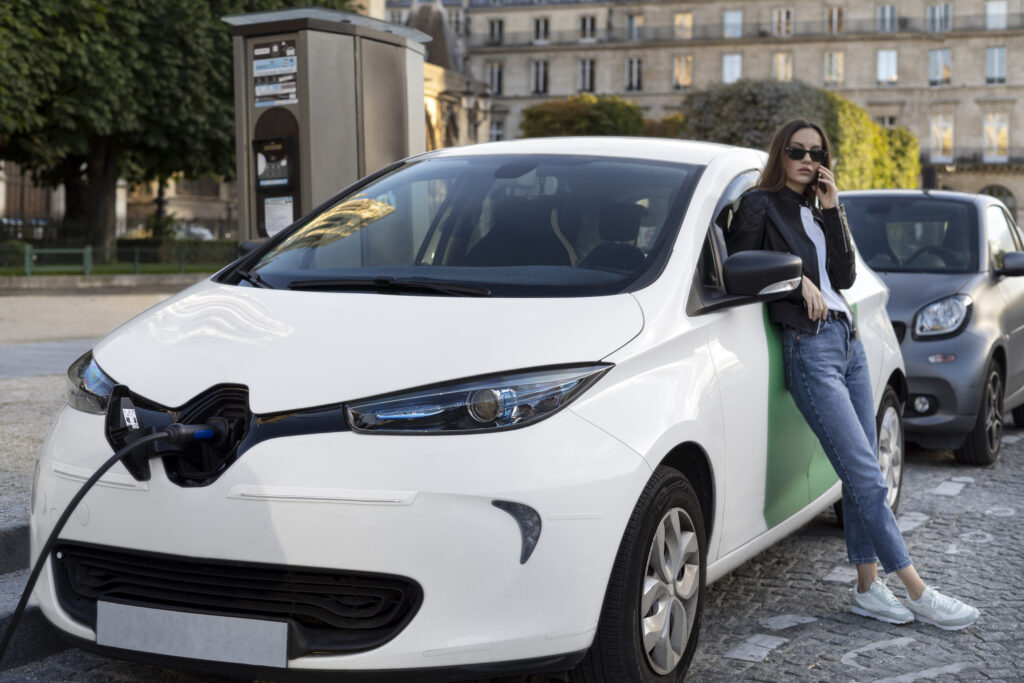
2. Connectivity: the Car as a Device
The perfect smart gadget tomorrow’s car will be. Cars will be in continual conversation with everything around them thanks to the “Internet of Vehicles” (IoV). V2X, or vehicle-to—everything, communication is this. It comprises:
Cars alert one another about icy patches around a blind corner or unexpected braking.
Cars using parking garages to locate an open spot or V2I, Vehicle-to- Infrastructure, talking with traffic lights to maximize flow and ease congestion.
Cars spotting pedestrians’ cellphones to stop collisions V2P, or Vehicle-to- Pedestrian
This continuous data stream will change the in-car experience in addition to make driving safer and more efficient. The car will start to serve as a personal center for entertainment, business, and leisure as well as a third home. This will result in hyper-personalized features like seats that change to match your biometrics and infotainment systems that know your tastes before you do, as automotive supplier Lectra notes. Of course, this begs important issues about data privacy and security, which will be a main focus in next years.
Link: Are we ready for our cars to know all about us? See our detailed study, The Privacy Paradox of the Connected Car.
3. Shared mobility: The end of ownership?
High vehicle costs—especially for highly advanced autonomous EVs—along with the ease of on-demand services challenge the very concept of personal car ownership. As the World Economic Forum addresses, a seamless, integrated network will define urban transportation going forward.
Imagine a time when you will not be owning a car. You might ride an e-bike your daily commute. You call forth a four-seater autonomous pod to drive your children to school. You reserve a bigger, longer range EV for a weekend trip. Accessed through a single app on your phone, this MaaS (Mobility-as- a- Service) model could be more convenient, more reasonably priced, and far more efficient than the present system.
This would have a transforming effect on our cities. We would need far less cars generally if fleets of shared, autonomous vehicles were in continuous use. This could release enormous tracts of land now used for parking, which could be turned into parks, homes, and pedestrian-friendly areas, so improving the livability and greener nature of our cities.
4. H3 Industry & Sustainability: The Future Factory
The revolution is occurring on the assembly line not just on the road. The auto sector is drastically changing toward what’s known as “Econogy,” the blending of ecology with economy.
This begins with materials. Lightweight composites, recycled plastics, and sustainable materials including bio-based fabrics and even vegan-friendly leather substitutes are being used by automakers to lower the environmental impact of manufacturing.
The factories themselves are undergoing a sophisticated makeover in technology. Leveraging artificial intelligence, robotics, big data, and the Internet of Things (IoT)—the idea of Industry 4.0 is making manufacturing smarter and more efficient. After the upheavals of recent years, supply chains have become a major focus since predictive maintenance on machinery lowers downtime and AI-driven analysis optimizes them. From raw materials to completed vehicle, the aim is a strong, sustainable, and quite efficient manufacturing process.
The Road Ahead: Forecasts and Challenges for 2030 and Beyond
Though the road to this future is clear, it is not without challenges. To realize this vision, several big issues have to be resolved.
Building out a strong, dependable, and ubiquitous EV charging network presents the most immediate obstacle over overhaul. Along with public DC fast chargers along highways, this covers accessible charging for apartment dwellers or dense urban areas without private garages.
The heart of electric vehicles is batteries, but their manufacture depends on raw resources including nickel, cobalt, and lithium. One big difficulty is making sure these products are sustainably and ethically sourced. Next-generation solid-state batteries—which promise faster charging, more energy density, and better safety—are under development in a race by the industry. Furthermore vital will be building a circular economy for battery recycling.
The Geopolitical Game: International competition now mostly revolves on the EV supply chain. China now controls most important battery minerals’ processing as well as EV component manufacture. This has resulted in a worldwide race to create domestic supply chains, price wars and tariff implementation, which will still be shaping the market.
The human element of this enormous technological change will cause major disturbance of the workforce. From manufacturing to repair, millions of jobs connected to the internal combustion engine—from manufacturing to repair—will vanish. To guarantee a fair change for these workers, large expenditures in retraining and education initiatives will be required.
Your Part in the Automobile Future: Doable Actions for a Greener, smarter Path
This revolution is not something that is happening to us merely. Each of us is a dynamic participant with a part to perform. These five doable actions will help you interact with this new automotive age:
Continually educate yourself; the technology is changing at a dizzying speed. Watch reviews of new EVs from reliable manufacturers, follow credible automotive news sources, and keep educated about the policies under debate in your nation and community.
Review your actual usage patterns before you buy your next car to help you to better determine your true needs. Given your daily travel distance—30 miles round—do you truly need a large SUV with a 400-mile range? Could a smaller, more efficient electric vehicle fit? Could a car-sharing program or a combination of mobility choices entirely replace the need for a second family car?
Change Advocacy: Your voice counts. Support regional projects including more bike lanes, safer pedestrian infrastructure, improved public transit, and public EV charger installation. Tell your local officials that you give sustainable travel top importance.
Start Small: You can change your mobility behavior even if right now you are not in a position to purchase an electric vehicle. Try carpooling with a coworker, keep your present car for best fuel economy, or one day a week use public transportation to combine errands into one trip.
Accept the Test Drive: We’re repeating this one for a good reason. Experiencing the significant change that is under way personally is the single best way to sort through the noise and grasp it. The most convincing case there is is the quiet power and flawless performance of an electric vehicle.
The journey starts now; the destination is exciting.
The most fascinating and disruptive turning point in automotive history is here. Unquestionably, the future is electric; it is also increasingly autonomous, always connected, and intelligibly shared. The foundations are being laid now; this is not a far-off dream; the speed of change is simply hastening.
This metamorphosis is about far more than simply substituting a charging plug for a gas pump. This is an opportunity to radically rethink our relationship with mobility, create quieter, cleaner, more people-centric cities, and significantly back off from the brink of climate disaster. The benefits of the electric car go beyond mere personal savings or exciting performance to include helping to create a better quality of life for all and a cleaner earth.
Though the road ahead presents difficulties, the destination is a world of great promise. We are all on this road together; it is a revolution you can join not from the sidelines but by driving—or, in not too distant future, by just sitting back and appreciating the ride.

